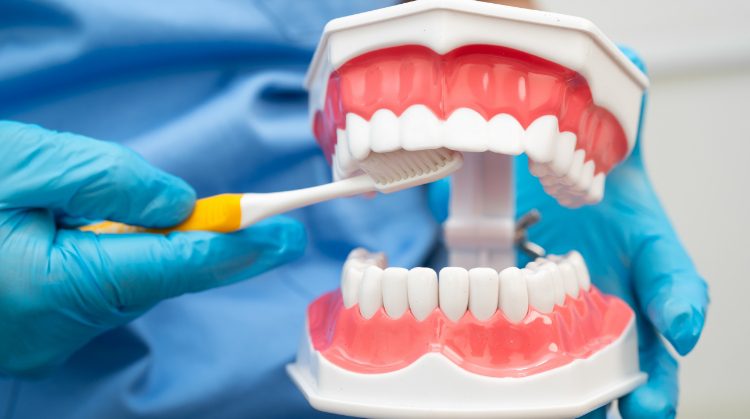
Research continues to show the many health concerns associated with obesity and unhealthy weight gain in adults and children. Most of the time this information is focused on diseases of the body, but a new study focuses on the mouth and the effects of obesity on oral health.
A Link Between Gum Disease and Obesity
A new study published in the journal Oral Diseases points to a possible link between unhealthy weight and poor oral health. The findings showed that overweight subjects had inferior oral health compared to participants in a healthy weight range. In fact, the study determined that the obese subjects were six times more at risk for severe gum disease.
The research took place in Thailand, where a body mass index, or BMI, of 23 or greater is considered overweight. Out of the 160 adults involved in the study, 70 percent were either overweight or obese. In the overweight and obese participants, white blood cells and other inflammation markers were higher than in participants of a healthy weight, and the overweight and obese participants also had a higher incidence of dental diseases.
When it came to oral health, gum disease was 4.2 times more prevalent in overweight participants and 5.9 times more likely in obese participants. The study points to inflammation as the likely reason for this connection in weight and dental disease.
Chronic Inflammation Has Far-Reaching Implications
According to research from the University of Oslo published in Science Daily, inflammation can be caused by an immune response to overeating. This can open the door to several chronic diseases, including arthritis, heart disease, diabetes and, according to some researchers, even depression.
Some inflammation is healthy, says Dr. Amy Norman, DDS, a leading cosmetic dentist is Everett, Washington.
“Inflammation is the body’s way of fighting off bacteria to keep you healthy,” she said. “When it can successfully do so, the inflammation subsides on its own. But when chronic inflammation occurs, it becomes a serious problem.”
The Lowdown on Gum Disease
Gum disease affects more than 3 million people in the United States each year, and that number continues to grow. The American Dental Association defines gum disease as infection of the tissues surrounding the teeth, also known as the gums.
Gum disease is largely preventable, said Norman.
“One of the biggest causes of gum disease is poor oral hygiene,” she said. “As plaque forms on teeth, it hardens and becomes tartar. Tartar can only be removed with professional cleaning methods. That’s why it’s so imperative to never skip those dental appointments.”
The good news is, in the beginning stages of the disease, all damage can usually be reversed, according to Norman. It’s once things progress to a more serious level of infection that damage becomes permanent. This stage of gum disease is called periodontitis. Once infection has set it, the gums begin to pull away from the teeth. If not treated, damage can reach past the gums into the supportive tissue and bones of the mouth, causing detrimental results. In fact, gum disease is the most common cause of tooth loss in adults.



